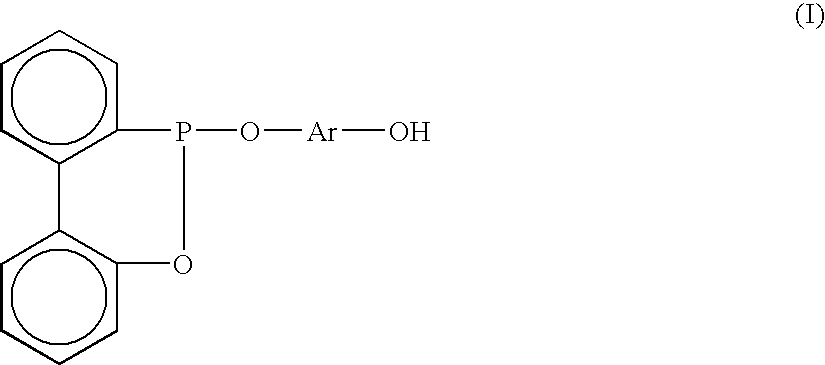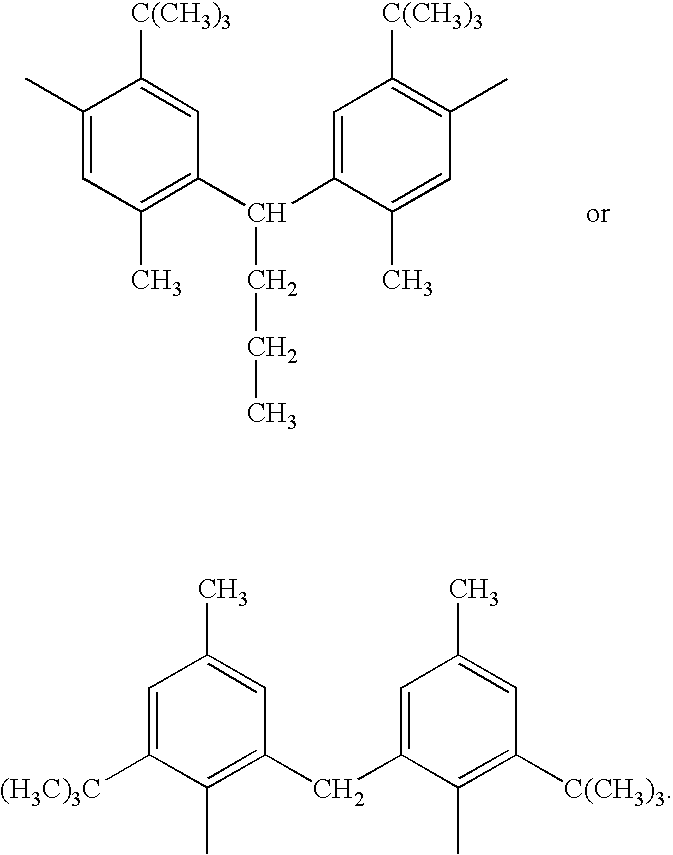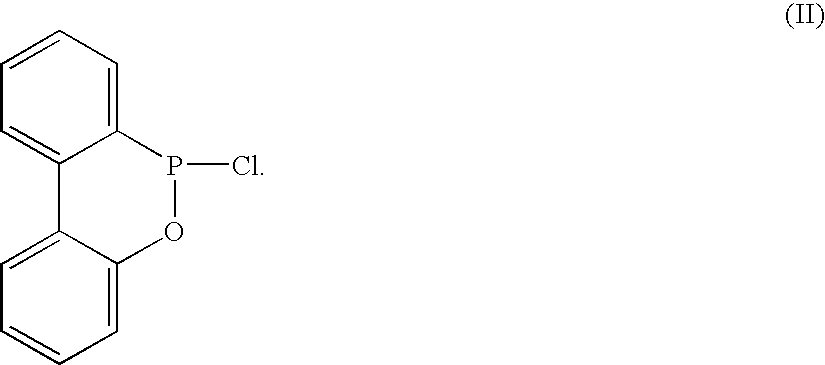Method for preparing arylphosphonite antioxidant
- Summary
- Abstract
- Description
- Claims
- Application Information
AI Technical Summary
Benefits of technology
Problems solved by technology
Method used
Image
Examples
example 1
[0017] 170 g (1 mole) of 2-phenylphenol, 151 g (1.1 mole) of phosphorous trichloride and 1.36 g (0.0.1 mole) of zinc chloride as a catalyst are weighted out and mixed together at the same instance inside a 2 liter reactor. A distillate storage tank equipped with a pressure equilibrium tube and a control valve is installed between the reactor and the condenser, the condenser is controlled at 0° C. while a gas inlet is attached above the condenser. On the other end of the gas inlet is a drying tube and the gas inlet is further connected to a neutralization tank. The reaction starts when the temperature of the reacting fluid is approximately at 30° C., with the temperature being maintained at 60˜80° C. throughout, about an hour later hydrochloric acid gas produced due to the reaction will starts to retard. Follow by the aforesaid reaction the temperature of esterification is further elevated, where phosphorous trichloride is distilled continuously and its distillates are stored in a st...
example 2
[0020] The first stage esterification of the present example is the same as example 1. The second stage diphenol solution is prepared by dissolving 1 mole (340 g) of 2,2′-methylenebis(6-t-butyl-4-methylphenol) in 100 ml of chlorobenzene solution. The diphenol solution is then conducted into TBBP under thermal reaction and it is reflux for 20 hours. Next, a stream of nitrogen gas is conducted into the solution for an hour, and upon reaction completion the temperature is raised back to room temperature. Subsequently, a stream of ammonia gas is conducted into the solution interface for 5 minutes, then it is filtered and chlorobenzene is recovered leaving TMBP as the sole initial product. The product is determined by 31P nuclear resonance spectroscopy whether CDOP is complete esterification, also through gel permeation chromatographic analysis, it is analyzed that the selectivity of TMBP is roughly 80%. By liquid chromatographic separated with ethyl acetate being its eluent, pure TMBP i...
example 3
[0022] Obtain and mix PP powder (Yung Chia Chem. Ind. Co. NO. 2020) with 1200 ppm of calcium stearic acid (relative weight), then the mixed powder is added separately into 1000 ppm of TBBP initial product, TBBP pure product, TMBP initial product, TMBP pure product, as well as comparative example [1000 ppm of first grade antioxidant 1010 (tetrakis(3-(3,5-di-t-butyl-4-hydroxyphenyl)propionyloxymethyl)methane 5) and 1000 ppm of second grade antioxidant 168 (tris(2,4-di-t-butylphenyl)phosphite)]. After the powder is blended in a mixer at 200° C., melt index (MI) is extruded 5 times at 230° C. and yellowness index (YI) test pieces were then molded by injection molding at 250° C., where the data is shown in table 1.
[0023] As demonstrated in table 1 below, when the bifunctional arylphosphonite antioxidant of the present invention comes across high temperature processing, the potency is more apparent with respect to common antioxidants.
TABLE 11st2nd3rd4th5thPPtrialtrialtrialtrialtrialMel...
PUM
 Login to View More
Login to View More Abstract
Description
Claims
Application Information
 Login to View More
Login to View More - R&D
- Intellectual Property
- Life Sciences
- Materials
- Tech Scout
- Unparalleled Data Quality
- Higher Quality Content
- 60% Fewer Hallucinations
Browse by: Latest US Patents, China's latest patents, Technical Efficacy Thesaurus, Application Domain, Technology Topic, Popular Technical Reports.
© 2025 PatSnap. All rights reserved.Legal|Privacy policy|Modern Slavery Act Transparency Statement|Sitemap|About US| Contact US: help@patsnap.com



